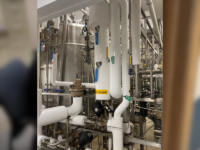Having a solid electrical safety program is paramount to all industrial companies; first and foremost, to protect employees. It only takes one arc flash event to result in an electrical burn or worse – a fatality. Beyond safety concerns, protecting against an arc flash reduces the risk of damage to equipment, downtime and ensures you are in compliance with OSHA and the National Electrical Code (NEC) or NFPA 70E. While we all know safety is important in any industrial setting, knowing exactly when you need to be concerned about potential risk may not always be so obvious.
An Arc Flash occurs during a fault or short circuit condition. The Arc Flash can be initiated through accidental contact, equipment which is underrated for the available short circuit current, deterioration or corrosion of equipment, as well as other causes. An Arc Flash event can expel large amounts of deadly energy. This energy can cause copper to expand to approximately 67,000 times its size at a temperature of 35,000 degrees Fahrenheit (°F).
By code, all industrial facilities are supposed to have all maintainable equipment marked with the available incident energy and required level of personal protection equipment (PPE). Arc Flash studies determine the available incident energy levels present at various points on the facility’s electrical distribution system. There are numerous factors and conditions that can result in an arc flash hazard. It is time to consider an analysis if:
- An Arc Flash study has not been conducted over the last five years – NFPA 70E requires that Arc Flash Hazard Analysis studies be reviewed every 5 years.
- The electric utility or distribution system has gone through numerous changes.
- Recent electrical equipment failures within the facility caused extensive and costly downtime.
- An expansion and/or modification of the existing electrical distribution system is being considered.
If any of the above statements are true for you, a safety study should be considered.
Huffman Engineering offers Engineered Design Studies completed under the direction of one of our Professional Engineers. Our Professional Engineers and our firm are licensed in multiple states across the Midwest including Nebraska, Colorado, Kansas, Iowa, Missouri and Wisconsin.
Huffman Engineering has a broad-based knowledge and experience in all areas of electrical systems. To complete safety studies, we use state-of-the-art SKM software for system modeling and we adhere to the most current IEEE standards and the National Electrical Safety Code. Our safety studies include Incident Energy/Arc Flash Hazard Analysis, Short Circuit Studies and Protective Device Coordination.
Incident Energy/Arc Flash Hazard Analysis
Arc Flash studies determine the available incident energy levels present at various points on the facility’s electrical system. We work with clients to provide proper arc flash evaluation to identify the appropriate personal protection equipment (PPE) to work safely on the electrical system.
Collaborating with the client, the utility company and a local electrician (as required) to collect the necessary system data required for the calculations, Huffman Engineering can assist with the following to meet code requirements:
- Calculating cal/cm2 incident energy
- Calculating and defining flash protection boundaries
- Modifying overcurrent device protection schemes to minimize fault current magnitude and duration resulting in lower arc flash incident energy
Short Circuit Studies
Short Circuit (Fault Current) studies are required by NEC to ensure that existing and new equipment ratings are adequate to withstand the available short circuit energy available at each point in the electrical system, ensuring your system is designed properly.
Protective Device Coordination
Electrical system protection and coordination studies are key components to ensure a facility’s electrical system is operating in a safe and reliable manner. Proper system coordination ensures that electrical faults are isolated within the electrical system such that unnecessary shutdowns can be isolated to individual sections of a facility’s electrical system.
The protective device coordination study is very involved and can be rather costly depending on the size and complexity of your system. If a five- to ten-minute shutdown is tolerable for your plant, the cost of the protective device coordination study may not be warranted. On the other hand, if 100% uptime is critical to your plant and a five- to ten-minute shutdown can cost tens of thousands or even millions of dollars, a protective device coordination study is absolutely worth the investment.
Need to Know More?
If you are interested in learning more about our engineering studies and the cost to perform a study, please click here to contact us and we will be in touch soon.




